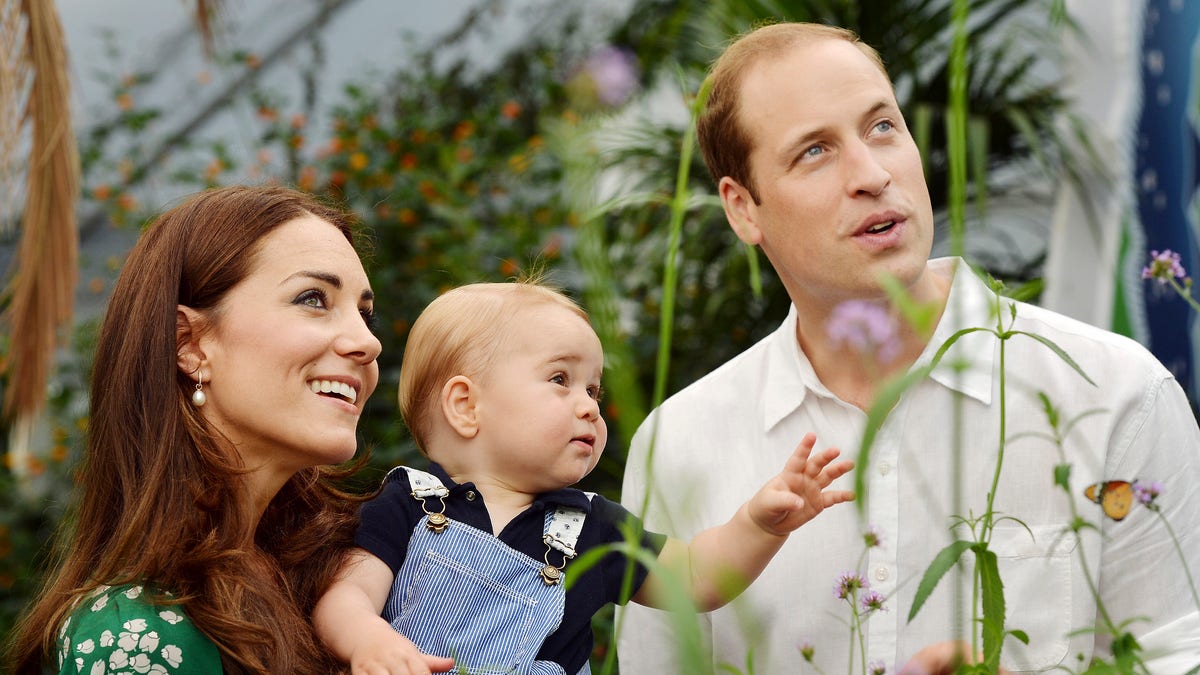
Britain's Catherine, Duchess of Cambridge, carries her son Prince George alongside her husband Prince William as they visit the Sensational Butterflies exhibition at the Natural History Museum in London, July 2, 2014. REUTERS/John Stillwell/Pool
The Duchess of Cambridge and Prince William announced they’re expecting their second child, but that she is being treated for severe morning sickness at Kensington Palace.
Kate Middleton had been treated for hyperemesis gravidarum — a severe form of morning sickness characterized by excessive vomiting and nausea— while pregnant with their first child in late 2012.
It’s not uncommon for women who had hyperemesis gravidarum during their first pregnancy to suffer from it again in subsequent pregnancies. Sometimes it can be just as bad as the first time.
The condition affects about 2 percent of all pregnant women. Remember that over 30 percent of women typically complain of some nausea or morning sickness, but that quickly subsides after the first trimester. True hyperemesis gravidarum can lead to dehydration, which sends many of these women to the hospital for treatment. This is an issue that needs to be evaluated by an obstetrician, as there are other medical conditions that may be present.
There are some factors associated with this condition, including elevation of the pregnancy hormone hCG, increased levels of estrogen, and a high fat diet. Recent research found that many pregnant women who suffer from this excessive vomiting and nausea may have helicobacter pylori bacterium in their stomach, which is associated with stomach ulcers.
The 32-year-old duchess has yet to pass the 12-week stage, but after about 16 weeks of gestation, she should feel better. Treatments are supportive, including hydration and moderating the diet early in the pregnancy. The diet should be bland— mashed potatoes, mashed bananas, plain pasta, crackers— and meals should be small with some snacks in between. Patients should avoid fatty foods, coffee or tea.
Medications used for hyperemesis gravidarum include anti-nausea medicines, antacids and antihistamines— vitamin B6 is especially helpful. If the dehydration and nausea are very severe, patients may be treated in the hospital with IV fluids and intravenous medications.
Here are my tips for the Princess to deal with the nausea and vomiting at home:
• Don’t worry about gaining weight. There will be plenty of time to readjust your diet later so you can gain a well-balanced amount of weight. The key now is to stay hydrated and to prevent bouts of vomiting, which can ultimately make you lose electrolytes.
• Eliminate triggers. If Prince William is wearing too much cologne or certain fragrances in the house – or should I say, palace – are bothering you, get rid of them. If there are certain odors emitting from the royal kitchen, tell them to stop cooking those broccoli and Brussels sprouts.
• Carbohydrates are your friends – such as pasta, rice and potatoes. One of my favorite recipes is some pasta with a little olive oil and a pinch of salt. Don’t eat garlic or add other spices to your food, because it can give you severe heartburn.
• If you want afternoon tea at 4 p.m., you may want to switch to ginger tea and drop the Earl Grey.
• There are certain fruits that are also very helpful with digestion. Kiwis are rich in vitamin C and frozen seedless grapes make excellent snacks that will cool your palate and help you with hypersalivation. Fruits rich in water – such as watermelon and cantaloupes – are my favorite fruits for soothing a nauseous stomach.
And of course, I’m sure your doctors have considered giving you medication. Here in the United States, a popular medication Zofran – ondansetron hydrochloride tablets, which block the serotonin 5-HT3 receptor type – helps some patients with severe nausea.
Ultimately, the key is to keep your stomach somewhat busy throughout the day. You want to eat small portions – but eat them frequently.
So there you have it. Feel free to call me if you need any further advice. Once you start feeling better, you can start on the Mediterranean diet, which we know is the best for pregnant women.
